- Joined
- Feb 2, 2011
- Messages
- 2,093
NEW RELEASES FOR MARCH 2021
THE EIGHTEENTH CENTURY COLLECTION

The Battle of Oriskany on August 6, 1777 was one of the bloodiest battles in the American Revolutionary War and a significant engagement of the Saratoga campaign. A party of Loyalists and several Indian allies ambushed an American military party that was trying to relieve the siege of Fort Stanwix. This was one of the few battles in which almost all of the participants were Americans; Patriots and allied Oneidas fought against Loyalists and allied Iroquois in the absence of British regular soldiers.
The Patriot relief force came from the Mohawk Valley under General Nicholas Herkimer and numbered around 800 men of the Tryon County militia plus a party of Oneida warriors. British commander Barry St. Leger authorized an intercepting force consisting of a Hanau Jäger (light infantry) detachment, Sir John Johnson's King's Royal Regiment of New York, Indian allies from the Six Nations, particularly Mohawks and Senecas and other tribes to the north and west, and Indian Department Rangers, totaling at least 450 men.
The Loyalist and Indian force ambushed Herkimer's force in a small valley about six miles (10 km) east of Fort Stanwix, near the village of Oriskany, New York. Herkimer was mortally wounded, and the battle cost the Patriots approximately 450 casualties, while the Loyalists and Indians lost approximately 150 dead and wounded. The result of the battle remains ambiguous. The apparent Loyalist victory was significantly affected by a sortie from Fort Stanwix in which the Loyalist camps were sacked, damaging morale among the allied Indians.
The battle also marked the beginning of a war among the Iroquois, as Oneida warriors under Colonel Louis and Han Yerry allied with the American cause. Most of the other Iroquois tribes allied with the British, especially the Mohawks and Senecas.
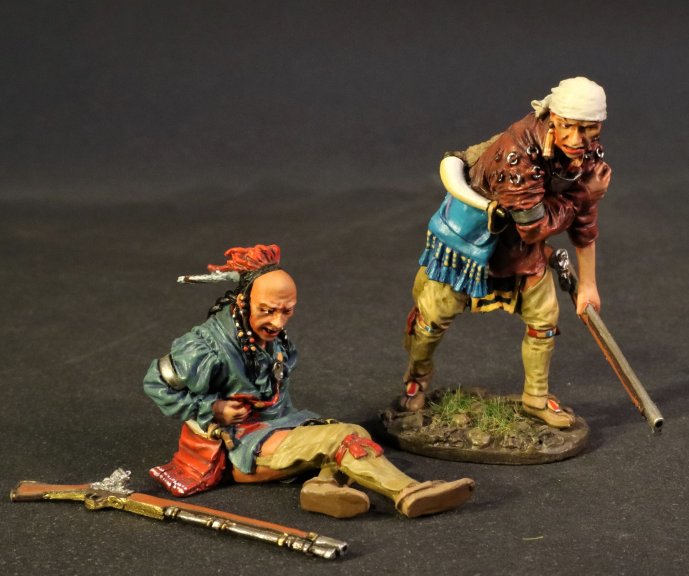
DAM-22
THE BATTLE OF ORISKANY, August 6[SUP]th[/SUP] 1777,
THE ONEIDA,
2 WOUNDED ONEIDA
In July and August 1775 Herkimer headed the Tryon County Committee of Safety, and became colonel of the district militia. After the split in which Loyalist militia members from the area withdrew to Canada, he was commissioned a brigadier general in the Tryon County militia by the Provincial Congress on September 5, 1776. In June 1776, he led 380 men of the Tryon County militia to confront Joseph Brant (Mohawk) at Unadilla, New York. Herkimer asked the Mohawk and five other Iroquois nations to remain neutral, while Brant said the Indians owed their loyalty to the King.
When Herkimer learned of the siege of Fort Stanwix to the west in late July 1777, he ordered the Tryon County militia to assemble at Fort Dayton. He marched them out to Fort Stanwix, about 28 miles to the west. His force marching in column was ambushed on August 6 by a mixed force of British regulars, Tory militia, and Mohawk in the Battle of Oriskany. Herkimer's horse was shot, and he was seriously wounded in the leg. In spite of his injuries, he sat propped up against a tree, lit his pipe, and directed his men in the battle, rallying them to avoid two panicked retreats. When they withdrew, they carried him home.
The brigade surgeon, William Petrie, dressed Herkimer's wound in the field and placed him on a litter. The wound quickly became infected, but the decision to amputate the leg was delayed for about ten days after the battle. The operation was performed by an inexperienced surgeon, Robert Johnson, because Petrie had also been wounded in the battle and was not available. The operation went poorly, the wound bled profusely, and Herkimer died of the injury on August 16, at around the age of 49.
THE CONTINENTAL ARMY
The Continental Army was formed by the Second Continental Congress after the outbreak of the American Revolutionary War by the colonies that became the United States of America. Established by a resolution of the Congress on June 14, 1775, it was created to coordinate the military efforts of the Thirteen Colonies in their revolt against the rule of Great Britain. The Continental Army was supplemented by local militias and troops that remained under control of the individual states or were otherwise independent. General George Washington was the commander-in-chief of the army throughout the war.
The Continental Army consisted of soldiers from all 13 colonies and, after 1776, from all 13 states. When the American Revolutionary War began at the Battles of Lexington and Concord on April 19, 1775, the colonial revolutionaries did not have an army. Previously, each colony had relied upon the militia, made up of part-time citizen-soldiers, for local defense, or the raising of temporary "provincial regiments" during specific crises such as the French and Indian War of 1754–63. As tensions with Great Britain increased in the years leading to the war, colonists began to reform their militias in preparation for the perceived potential conflict. Training of militiamen increased after the passage of the Intolerable Acts in 1774. Colonists such as Richard Henry Lee proposed forming a national militia force, but the First Continental Congress rejected the idea.
The Continental Army of 1777–80 evolved out of several critical reforms and political decisions that came about when it became apparent that the British were sending massive forces to put an end to the American Revolution. The Continental Congress passed the "Eighty-eight Battalion Resolve", ordering each state to contribute one-battalion regiments in proportion to their population, and Washington subsequently received authority to raise an additional 16 battalions. Enlistment terms extended to three years or to "the length of the war" to avoid the year-end crises that depleted forces (including the notable near-collapse of the army at the end of 1776, which could have ended the war in a Continental, or American, loss by forfeit)
THE 2[SUP]nd[/SUP] NEW HAMPSHIRE REGIMENT
The 2nd New Hampshire Regiment was formed in early May 1775, as the second of three Continental Army regiments raised by the state of New Hampshire during the American Revolutionary War. Its first commander was Colonel Enoch Poor, with Joseph Cilley as major. Many of the men who served in the unit hailed from southeastern New Hampshire and western Maine (then part of Massachusetts).
After Enoch Poor was promoted to Brigadier, Nathan Hale was commissioned colonel of the 2nd New Hampshire Regiment in April 1777.
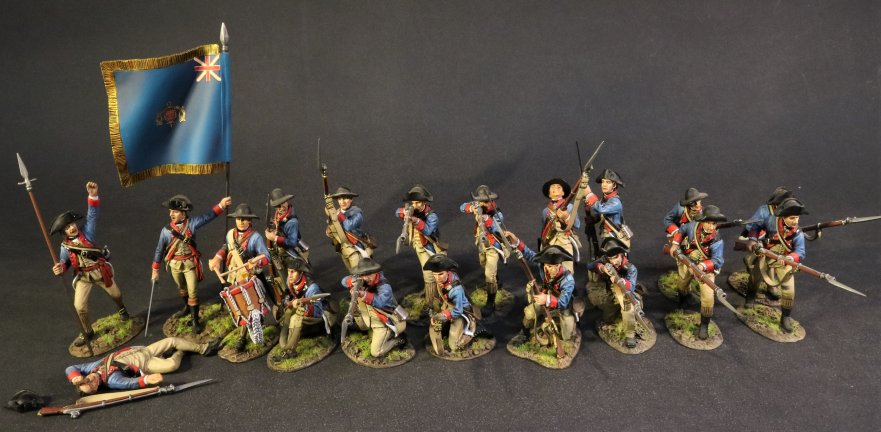
Flags or colors which belonged to the 2nd NH were captured at Fort Anne in July 1777 during the retreat from Fort Ticonderoga. After more than a century, they were returned from Britain, and are on display today at the Tuck Library of the New Hampshire Historical Society in Concord. They are among the only American battle flags from the Revolutionary War known to exist. The colors containing the motto "The Glory Not the Prey" are marked "2nd NH Regt", while the other colors captured at the time, the linked 13 rings, were likely a type of national color. Two other flags captured by the British at Skenesboro were also noted and they had similar designs, especially another with the 13 linked rings. While their colors were lost, the 2nd New Hampshire fought bravely in the autumn of 1777, where they were heavily engaged with British forces at Saratoga, leading to the surrender of General John Burgoyne's army.
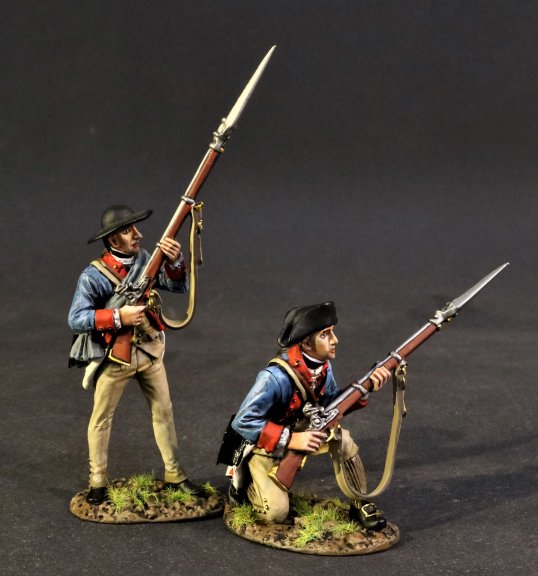
SNH-05
DRUMS ALONG THE MOHAWK,
THE BATTLE OF SARATOGA 1777,
CONTINENTAL ARMY,
THE 2[SUP]nd[/SUP] NEW HAMPSHIRE REGIMENT,
2 LINE INFANTRY.
(2pcs)
THE 12th MASSACHUSETTS REGIMENT
The 12[SUP]th[/SUP] Massachusetts Regiment, also known as the 18[SUP]th[/SUP] Continental Regiment and Phinney’s Regiment was raised on April 23[SUP]rd[/SUP] 1775, under Colonel Edmund Phinney outside of Boston Massachusetts. The regiment saw action at the Battle of Bunker Hill, Battle of Valcour Island, Battle of Saratoga and the Battle of Monmouth.
The regiment was disbanded on January 1[SUP]st[/SUP] 1781, at West Point New York.
The brown coats with red facings was a popular uniform for American Continental Regiments, and these figures could represent several units for this period.
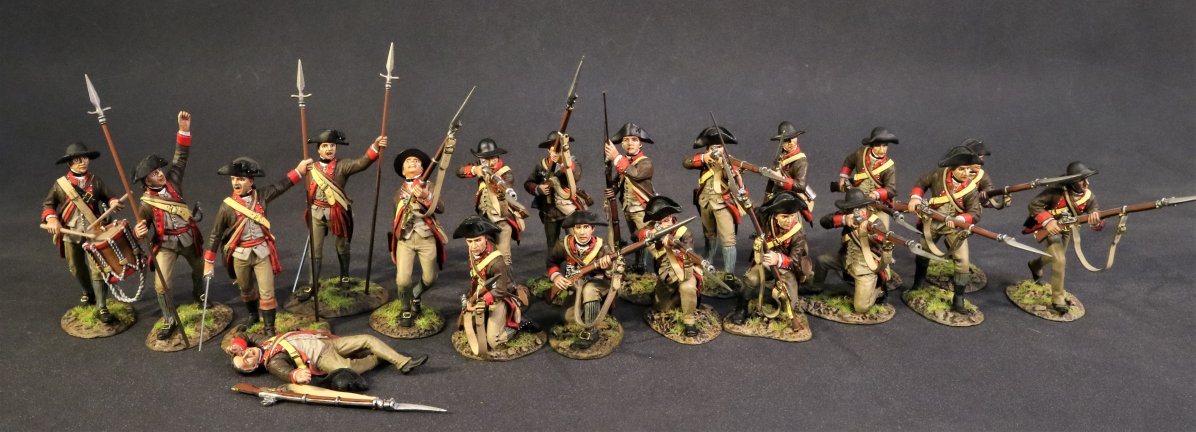
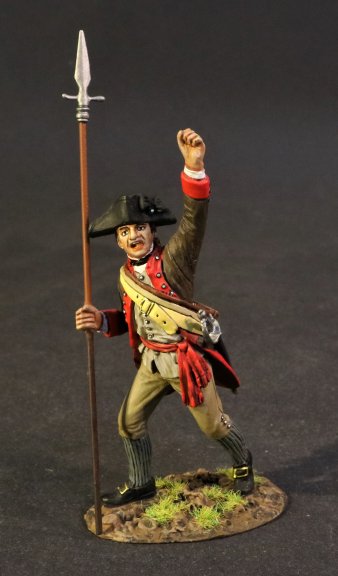
SMASS12-01
THE 12[SUP]th[/SUP] MASSACHUSETTS REGIMENT,
INFANTRY OFFICER
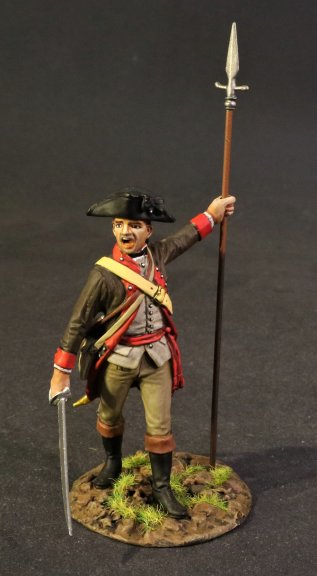
SMASS12-02A
THE 12[SUP]th[/SUP] MASSACHUSETTS REGIMENT,
INFANTRY OFFICER
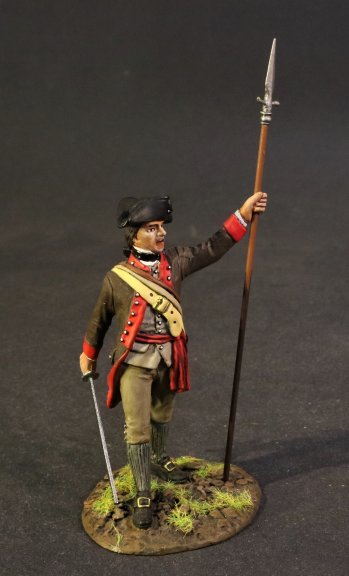
SMASS12-02B
THE 12[SUP]th[/SUP] MASSACHUSETTS REGIMENT,
INFANTRY OFFICER
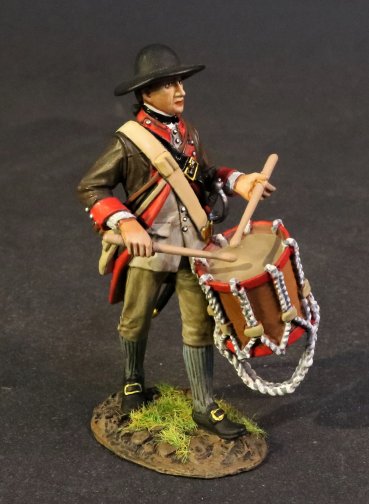
SMASS12-03
THE 12[SUP]th[/SUP] MASSACHUSETTS REGIMENT,
DRUMMER
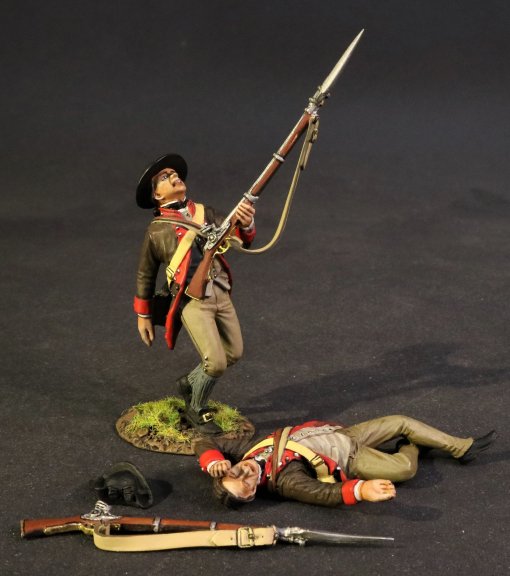
SMASS12-04
THE 12[SUP]th[/SUP] MASSACHUSETTS REGIMENT,
2 WOUNDED INFANTRY
PLEASE CONTACT YOUR LOCAL DEALER FOR FURTHER INFORMATION
THE EIGHTEENTH CENTURY COLLECTION

The Battle of Oriskany on August 6, 1777 was one of the bloodiest battles in the American Revolutionary War and a significant engagement of the Saratoga campaign. A party of Loyalists and several Indian allies ambushed an American military party that was trying to relieve the siege of Fort Stanwix. This was one of the few battles in which almost all of the participants were Americans; Patriots and allied Oneidas fought against Loyalists and allied Iroquois in the absence of British regular soldiers.
The Patriot relief force came from the Mohawk Valley under General Nicholas Herkimer and numbered around 800 men of the Tryon County militia plus a party of Oneida warriors. British commander Barry St. Leger authorized an intercepting force consisting of a Hanau Jäger (light infantry) detachment, Sir John Johnson's King's Royal Regiment of New York, Indian allies from the Six Nations, particularly Mohawks and Senecas and other tribes to the north and west, and Indian Department Rangers, totaling at least 450 men.
The Loyalist and Indian force ambushed Herkimer's force in a small valley about six miles (10 km) east of Fort Stanwix, near the village of Oriskany, New York. Herkimer was mortally wounded, and the battle cost the Patriots approximately 450 casualties, while the Loyalists and Indians lost approximately 150 dead and wounded. The result of the battle remains ambiguous. The apparent Loyalist victory was significantly affected by a sortie from Fort Stanwix in which the Loyalist camps were sacked, damaging morale among the allied Indians.
The battle also marked the beginning of a war among the Iroquois, as Oneida warriors under Colonel Louis and Han Yerry allied with the American cause. Most of the other Iroquois tribes allied with the British, especially the Mohawks and Senecas.

DAM-22
THE BATTLE OF ORISKANY, August 6[SUP]th[/SUP] 1777,
THE ONEIDA,
2 WOUNDED ONEIDA
In July and August 1775 Herkimer headed the Tryon County Committee of Safety, and became colonel of the district militia. After the split in which Loyalist militia members from the area withdrew to Canada, he was commissioned a brigadier general in the Tryon County militia by the Provincial Congress on September 5, 1776. In June 1776, he led 380 men of the Tryon County militia to confront Joseph Brant (Mohawk) at Unadilla, New York. Herkimer asked the Mohawk and five other Iroquois nations to remain neutral, while Brant said the Indians owed their loyalty to the King.
When Herkimer learned of the siege of Fort Stanwix to the west in late July 1777, he ordered the Tryon County militia to assemble at Fort Dayton. He marched them out to Fort Stanwix, about 28 miles to the west. His force marching in column was ambushed on August 6 by a mixed force of British regulars, Tory militia, and Mohawk in the Battle of Oriskany. Herkimer's horse was shot, and he was seriously wounded in the leg. In spite of his injuries, he sat propped up against a tree, lit his pipe, and directed his men in the battle, rallying them to avoid two panicked retreats. When they withdrew, they carried him home.
The brigade surgeon, William Petrie, dressed Herkimer's wound in the field and placed him on a litter. The wound quickly became infected, but the decision to amputate the leg was delayed for about ten days after the battle. The operation was performed by an inexperienced surgeon, Robert Johnson, because Petrie had also been wounded in the battle and was not available. The operation went poorly, the wound bled profusely, and Herkimer died of the injury on August 16, at around the age of 49.
THE CONTINENTAL ARMY
The Continental Army was formed by the Second Continental Congress after the outbreak of the American Revolutionary War by the colonies that became the United States of America. Established by a resolution of the Congress on June 14, 1775, it was created to coordinate the military efforts of the Thirteen Colonies in their revolt against the rule of Great Britain. The Continental Army was supplemented by local militias and troops that remained under control of the individual states or were otherwise independent. General George Washington was the commander-in-chief of the army throughout the war.
The Continental Army consisted of soldiers from all 13 colonies and, after 1776, from all 13 states. When the American Revolutionary War began at the Battles of Lexington and Concord on April 19, 1775, the colonial revolutionaries did not have an army. Previously, each colony had relied upon the militia, made up of part-time citizen-soldiers, for local defense, or the raising of temporary "provincial regiments" during specific crises such as the French and Indian War of 1754–63. As tensions with Great Britain increased in the years leading to the war, colonists began to reform their militias in preparation for the perceived potential conflict. Training of militiamen increased after the passage of the Intolerable Acts in 1774. Colonists such as Richard Henry Lee proposed forming a national militia force, but the First Continental Congress rejected the idea.
The Continental Army of 1777–80 evolved out of several critical reforms and political decisions that came about when it became apparent that the British were sending massive forces to put an end to the American Revolution. The Continental Congress passed the "Eighty-eight Battalion Resolve", ordering each state to contribute one-battalion regiments in proportion to their population, and Washington subsequently received authority to raise an additional 16 battalions. Enlistment terms extended to three years or to "the length of the war" to avoid the year-end crises that depleted forces (including the notable near-collapse of the army at the end of 1776, which could have ended the war in a Continental, or American, loss by forfeit)
THE 2[SUP]nd[/SUP] NEW HAMPSHIRE REGIMENT
The 2nd New Hampshire Regiment was formed in early May 1775, as the second of three Continental Army regiments raised by the state of New Hampshire during the American Revolutionary War. Its first commander was Colonel Enoch Poor, with Joseph Cilley as major. Many of the men who served in the unit hailed from southeastern New Hampshire and western Maine (then part of Massachusetts).
After Enoch Poor was promoted to Brigadier, Nathan Hale was commissioned colonel of the 2nd New Hampshire Regiment in April 1777.

Flags or colors which belonged to the 2nd NH were captured at Fort Anne in July 1777 during the retreat from Fort Ticonderoga. After more than a century, they were returned from Britain, and are on display today at the Tuck Library of the New Hampshire Historical Society in Concord. They are among the only American battle flags from the Revolutionary War known to exist. The colors containing the motto "The Glory Not the Prey" are marked "2nd NH Regt", while the other colors captured at the time, the linked 13 rings, were likely a type of national color. Two other flags captured by the British at Skenesboro were also noted and they had similar designs, especially another with the 13 linked rings. While their colors were lost, the 2nd New Hampshire fought bravely in the autumn of 1777, where they were heavily engaged with British forces at Saratoga, leading to the surrender of General John Burgoyne's army.

SNH-05
DRUMS ALONG THE MOHAWK,
THE BATTLE OF SARATOGA 1777,
CONTINENTAL ARMY,
THE 2[SUP]nd[/SUP] NEW HAMPSHIRE REGIMENT,
2 LINE INFANTRY.
(2pcs)
THE 12th MASSACHUSETTS REGIMENT
The 12[SUP]th[/SUP] Massachusetts Regiment, also known as the 18[SUP]th[/SUP] Continental Regiment and Phinney’s Regiment was raised on April 23[SUP]rd[/SUP] 1775, under Colonel Edmund Phinney outside of Boston Massachusetts. The regiment saw action at the Battle of Bunker Hill, Battle of Valcour Island, Battle of Saratoga and the Battle of Monmouth.
The regiment was disbanded on January 1[SUP]st[/SUP] 1781, at West Point New York.
The brown coats with red facings was a popular uniform for American Continental Regiments, and these figures could represent several units for this period.


SMASS12-01
THE 12[SUP]th[/SUP] MASSACHUSETTS REGIMENT,
INFANTRY OFFICER

SMASS12-02A
THE 12[SUP]th[/SUP] MASSACHUSETTS REGIMENT,
INFANTRY OFFICER

SMASS12-02B
THE 12[SUP]th[/SUP] MASSACHUSETTS REGIMENT,
INFANTRY OFFICER

SMASS12-03
THE 12[SUP]th[/SUP] MASSACHUSETTS REGIMENT,
DRUMMER

SMASS12-04
THE 12[SUP]th[/SUP] MASSACHUSETTS REGIMENT,
2 WOUNDED INFANTRY
PLEASE CONTACT YOUR LOCAL DEALER FOR FURTHER INFORMATION

